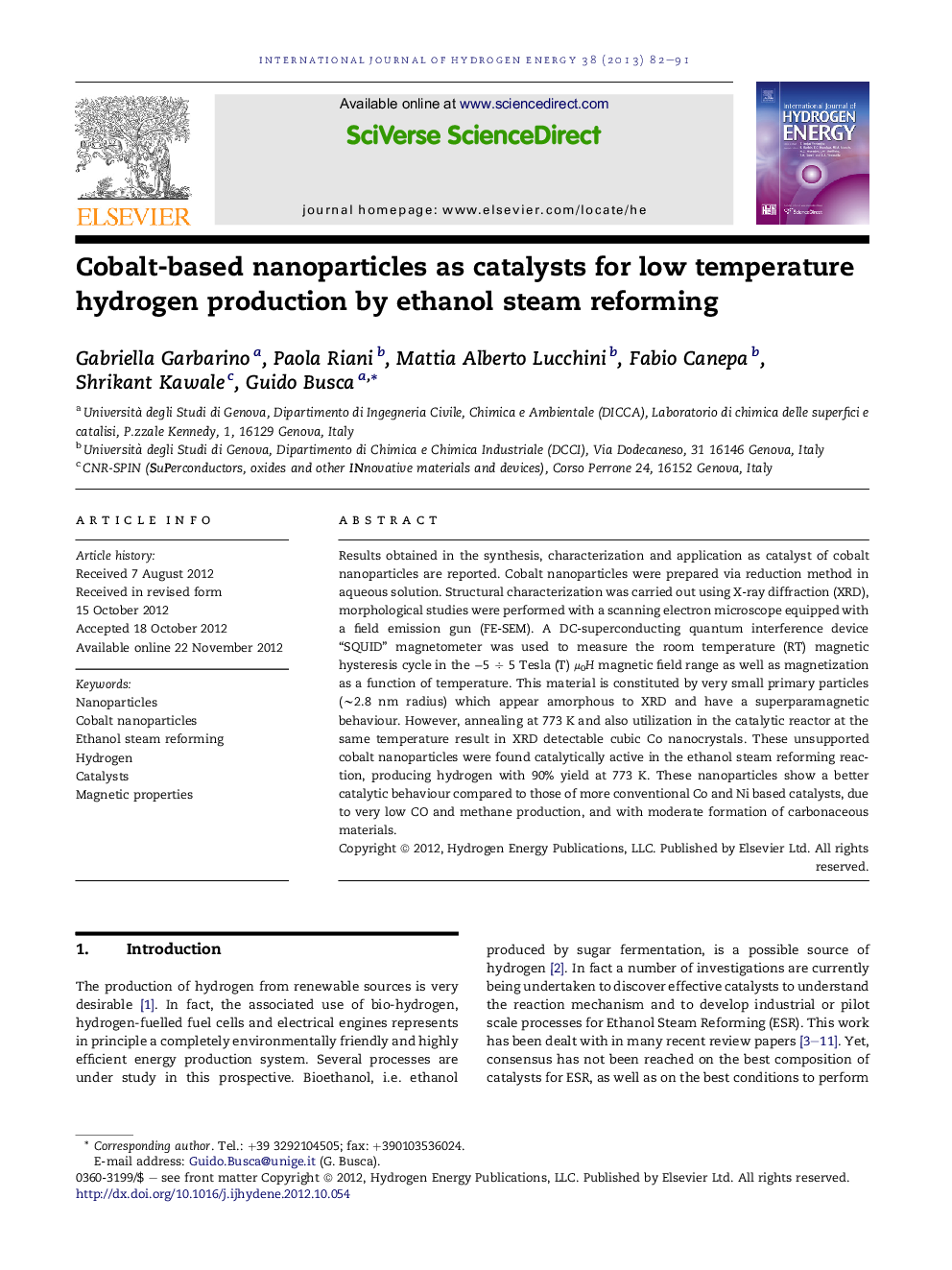| Article ID | Journal | Published Year | Pages | File Type |
|---|---|---|---|---|
| 1274352 | International Journal of Hydrogen Energy | 2013 | 10 Pages |
Results obtained in the synthesis, characterization and application as catalyst of cobalt nanoparticles are reported. Cobalt nanoparticles were prepared via reduction method in aqueous solution. Structural characterization was carried out using X-ray diffraction (XRD), morphological studies were performed with a scanning electron microscope equipped with a field emission gun (FE-SEM). A DC-superconducting quantum interference device “SQUID” magnetometer was used to measure the room temperature (RT) magnetic hysteresis cycle in the −5 ÷ 5 Tesla (T) μ0H magnetic field range as well as magnetization as a function of temperature. This material is constituted by very small primary particles (∼2.8 nm radius) which appear amorphous to XRD and have a superparamagnetic behaviour. However, annealing at 773 K and also utilization in the catalytic reactor at the same temperature result in XRD detectable cubic Co nanocrystals. These unsupported cobalt nanoparticles were found catalytically active in the ethanol steam reforming reaction, producing hydrogen with 90% yield at 773 K. These nanoparticles show a better catalytic behaviour compared to those of more conventional Co and Ni based catalysts, due to very low CO and methane production, and with moderate formation of carbonaceous materials.
► Superparamagnetic bulk Co nanoparticles have been prepared via reduction method. ► Co nanoparticles are active in ethanol steam reforming at 673 K and 773 K. ► Hydrogen yield of 90% is obtained at 773 K. ► Co nanoparticles behave better than Ni catalysts because of low CH4 formation. ► Low CO formation and moderate carbon formation are also found.
